
1. Introduction
Blogging isn’t just for hobbyists anymore—it’s a powerful tool for businesses, influencers, and thought leaders. Whether you’re looking to build your brand, generate leads, or simply share your passion, writing the perfect SEO blog post can make all the difference. But what actually makes a blog post perfect? Let’s break it down together, step by step.
Table of Contents
2. Planning Your Blog Post
Understanding Your Target Audience
Before typing a single word, you need to know who you’re writing for. Understanding your audience helps determine:
- Your tone (casual or professional?)
- Your language (technical or simple?)
- What problems your audience faces
- What kind of content solves those problems
When you know what makes them tick, your blog post becomes a direct conversation instead of a one-sided lecture. For example, if your audience is beginner bloggers, avoid jargon like “domain authority” without explaining it. Keep things relatable and helpful.
Choosing the Right Topic
Don’t just write what you want—write what your audience needs. Not every idea is blog-worthy. Your topic should solve a real problem, answer a question, or provide value in some way. Make sure it aligns with your niche and has long-term interest (evergreen content is king).
Use tools like Google Trends, Quora, Reddit, or AnswerThePublic, or even Reddit threads to discover what your target audience is actually searching for.
Conducting Keyword Research
Now that you’ve got a topic, it’s time to think SEO. Keyword research helps your post show up in search results. Use tools like:
- Google Keyword Planner
- Ubersuggest
- SEMrush
- Ahrefs
Find a main keyword and related terms (like “blog post format,” “SEO writing,” “blogging for beginners”). Sprinkle them naturally into your content without keyword stuffing.
3. Structuring Your Blog Post
Creating an Effective Outline
A well-structured blog post keeps readers on the page longer. Break it into:
- Headline (H1)
- Main Sections (H2)
- Subtopics (H3, H4)
- Bullet points & lists
- Short paragraphs
- Visuals or infographics
This makes scanning easy for readers and search engines.
Setting the Right Tone and Style
Are you casual, professional, witty, or educational?
Match your tone with your audience. Keep it personal—write like you’re talking to a friend.
Word Count: How Long Should It Be?
While there’s no golden number, aim for 1,500–2,500 words for in-depth, SEO-rich posts.
4. Writing a Killer Headline
Your headline is the first (and maybe only) thing people see.
Why Your Title Is the Most Important Part
If your title doesn’t grab attention, your blog post might as well not exist. Think like a click—but not clickbait.
Power Words and Emotional Triggers
Use words like “Ultimate,” “Proven,” “Secrets,” “Easy,” or “Step-by-Step.”
Example: “10 Proven Ways to Boost Your Blog Traffic Overnight”
5. Crafting the Introduction
Your first paragraph needs to hook the reader instantly.
Hooking the Reader Instantly
Start with a bold statement, a surprising stat, or a relatable question. Make them need to read on.
Introducing the Problem and Promise
Clearly outline the pain point you’re addressing and promise a solution they’ll find in the post.
6. Writing Engaging Body Content
Using Subheadings for Clarity
Each section should answer part of the reader’s query. Use subheadings (H2, H3) to:
- Organize information
- Improve readability
- Boost SEO
Each paragraph should stay on one idea and link logically to the next. Include examples, quotes, or stats to support your points. Break the post with relevant H2 and H3 headings improves readability and SEO.
Keeping Paragraphs Short and Sweet
Stick to 2–3 sentence paragraphs. White space is your friend.
Incorporating Personal Voice and Stories
Use I, you, we. Share personal experiences or analogies—it makes your writing relatable.
Using Lists and Bullet Points
Lists make complex ideas scannable and easier to digest.
Adding Images and Media
Visuals not only break up text but also explain complex ideas faster. Use screenshots, charts, memes, or GIFs when appropriate.
7. SEO Optimization Tips
Keyword Placement
Naturally include your focus keyword in:
- Title
- First 100 words
- Headings
- Meta description
- URL
- Alt text
Meta Description Best Practices
This is your blog’s sales pitch on search engines. Keep it under 160 characters and make it compelling.
Internal and External Linking
Link to your other blog posts and credible sources. This improves SEO and helps your readers dive deeper.
Image Alt Tags
Use descriptive alt tags with keywords for better accessibility and SEO.
8. Writing a Strong Conclusion
Recap Key Points
Sum up your main takeaways clearly and concisely.
Include a Clear Call-to-Action (CTA)
Ask readers to comment, share, subscribe, or download something. Guide their next step.
9. Editing and Proofreading
Tools for Polishing Your Draft
Before hitting publish:
- Read out loud
- Use Grammarly or Hemingway App
- Double-check for typos
- Ask someone to review it
- Google Docs Suggestions
Getting a Second Set of Eyes
Ask a friend or colleague to review—it catches things AI and spellcheckers might miss. You want your writing to sound human, not robotic, and be error-free
10.Formatting for Readability
Using Headings and White Space
Break up big chunks of text. Make sure your content breathes.
Mobile Optimization
Use responsive themes and preview your post on mobile before publishing.
11. Adding Visual Elements
Selecting Relevant Images
A wall of text is intimidating. Break it up with:
- Images or screenshots
- Charts or infographics
- Embedded videos
- Blockquotes
- Tables
Also, bold key points, italicize for emphasis, and use bullet lists for clarity. Choose high-quality visuals that complement your content.
Infographics and Video Content
Infographics simplify complex info. Videos boost engagement and time-on-page.
12. Promoting Your Blog Post
Social Media Sharing
Share on all platforms—tailor your message for each. Publishing is only half the job. Promotion is where the traffic comes in:
- Share on social media (LinkedIn, Twitter, Instagram)
- Email your subscribers
- Repurpose content into reels, carousels, or tweets
- Join blogger communities
- Use Pinterest or Medium
Be consistent and track what works.
13. Measuring Success
Using Google Analytics and Search Console
Track what’s working and where to optimize further. Install Google Analytics and Google Search Console. Look at:
- Page views
- Bounce rate
- Time on page
- Click-through rate (CTR)
- Keyword ranking
- Backlinks
Use the data to improve future posts.
14. Common Blogging Mistakes to Avoid
Even seasoned bloggers slip up. Avoid:
- Keyword stuffing
- Weak intros
- Not writing for a target audience
- No CTA
- Walls of text
- Ignoring SEO
Fixing these can dramatically improve engagement and traffic.
15. Conclusion
Writing the perfect blog post isn’t about perfection—it’s about connection. Know your audience, deliver real value, and optimize it smartly. When you write like you’re talking to a friend, and add just the right touch of SEO, your content will shine.
So, what’s stopping you? Grab that keyboard and start writing your next blog masterpiece!
16. FAQs
1. How do I choose a blog post topic?
Start by identifying your audience’s needs. Use keyword tools and platforms like Quora or Reddit for inspiration.
2. What’s the ideal blog post length for SEO?
Between 1,500 and 2,500 words usually performs well for search rankings and user engagement.
3. How often should I post on my blog?
Consistency matters more than frequency. Start with once a week and scale up if possible.
4. How do I make my blog post more engaging?
Use storytelling, visuals, personal anecdotes, and questions to keep readers interested.
5. Do I need to be an expert to write a blog?
Not at all! Just focus on sharing your knowledge and helping your audience.
- Ultimate Guide For Guest Posts, Build Backlinks & Optimized SEO in 2025
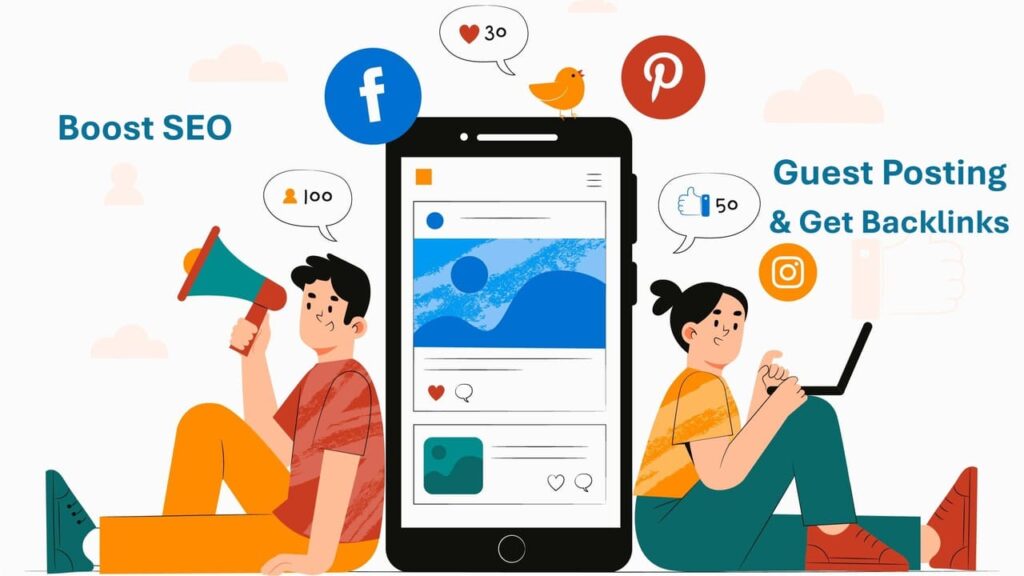 Introduction Ever heard of guest posting and thought, “Is this still a thing?” Well, the answer is a big, loud YES. Despite all the changes in Google’s algorithms, its remains one of the most powerful… Read more: Ultimate Guide For Guest Posts, Build Backlinks & Optimized SEO in 2025
Introduction Ever heard of guest posting and thought, “Is this still a thing?” Well, the answer is a big, loud YES. Despite all the changes in Google’s algorithms, its remains one of the most powerful… Read more: Ultimate Guide For Guest Posts, Build Backlinks & Optimized SEO in 2025 - Top 15 Types of Content Marketing and How to Use Them Effectively in 2025
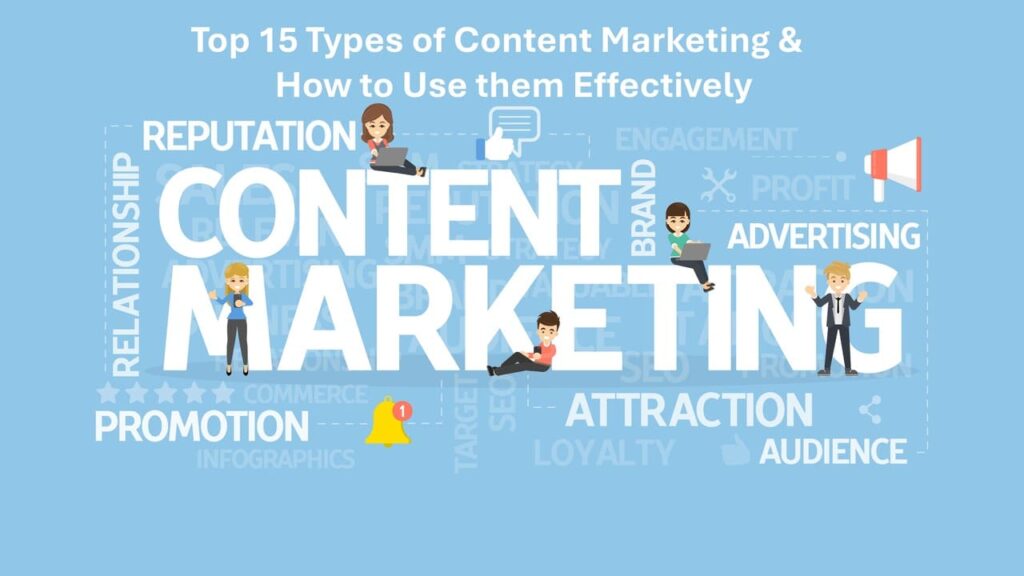 Introduction Content is the king, and marketing is its kingdom. In today’s hyper-connected digital world, content marketing is more than just a buzzword—it’s the soul of online growth. Whether you’re a solopreneur, startup, or enterprise,… Read more: Top 15 Types of Content Marketing and How to Use Them Effectively in 2025
Introduction Content is the king, and marketing is its kingdom. In today’s hyper-connected digital world, content marketing is more than just a buzzword—it’s the soul of online growth. Whether you’re a solopreneur, startup, or enterprise,… Read more: Top 15 Types of Content Marketing and How to Use Them Effectively in 2025 - Top 10 Social Media Marketing Strategies in 2025 for Brand Growth
 Introduction In 2025, social media marketing strategies has transformed into a data-driven, AI-empowered, and deeply personalized ecosystem. Brands no longer just post and hope for engagement—they leverage smart strategies, tools, and technologies to build communities,… Read more: Top 10 Social Media Marketing Strategies in 2025 for Brand Growth
Introduction In 2025, social media marketing strategies has transformed into a data-driven, AI-empowered, and deeply personalized ecosystem. Brands no longer just post and hope for engagement—they leverage smart strategies, tools, and technologies to build communities,… Read more: Top 10 Social Media Marketing Strategies in 2025 for Brand Growth - What is Social Media Marketing and Its Benefits in 2025
 Introduction: Welcome to the Era of Digital Conversations Imagine trying to run a business in 2025 without an online presence. Feels impossible, right? That’s because social media marketing isn’t just for fun anymore—it’s serious business.… Read more: What is Social Media Marketing and Its Benefits in 2025
Introduction: Welcome to the Era of Digital Conversations Imagine trying to run a business in 2025 without an online presence. Feels impossible, right? That’s because social media marketing isn’t just for fun anymore—it’s serious business.… Read more: What is Social Media Marketing and Its Benefits in 2025 - What is Content Marketing & Why It’s Crucial in 2025 | Complete Guide
 Introduction What is Content Marketing? Content marketing is all about creating and sharing valuable, relevant, and consistent content to attract and retain a clearly defined audience and ultimately, to drive profitable customer actions. In simpler… Read more: What is Content Marketing & Why It’s Crucial in 2025 | Complete Guide
Introduction What is Content Marketing? Content marketing is all about creating and sharing valuable, relevant, and consistent content to attract and retain a clearly defined audience and ultimately, to drive profitable customer actions. In simpler… Read more: What is Content Marketing & Why It’s Crucial in 2025 | Complete Guide - How to Get Google Adsense Approval for New Blog in 2025
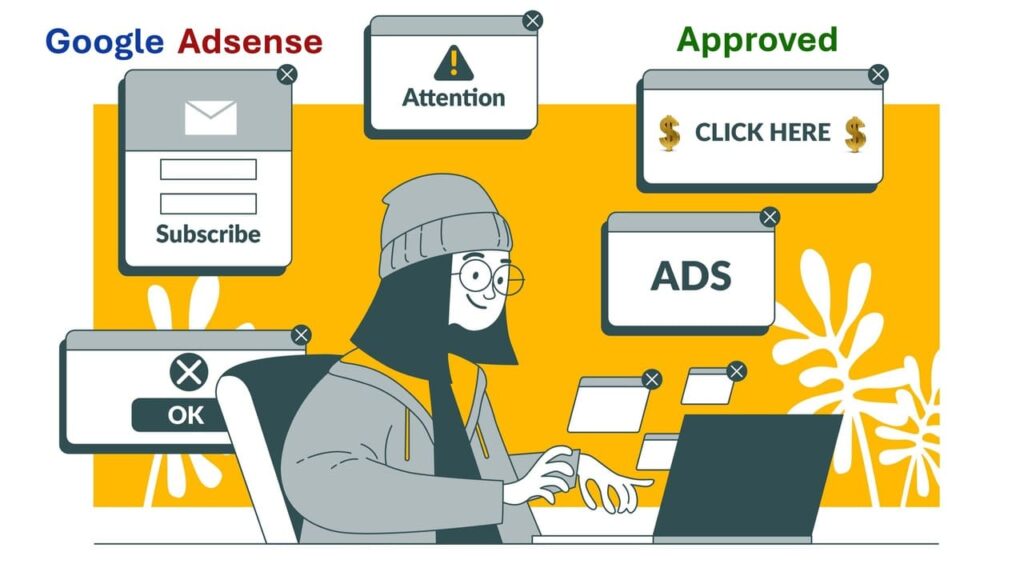 1. Introduction Discover how to get Google AdSense approval for your new blog in 2025 with this step-by-step guide. Learn key requirements, content tips, common mistakes to avoid, and how to increase your chances of… Read more: How to Get Google Adsense Approval for New Blog in 2025
1. Introduction Discover how to get Google AdSense approval for your new blog in 2025 with this step-by-step guide. Learn key requirements, content tips, common mistakes to avoid, and how to increase your chances of… Read more: How to Get Google Adsense Approval for New Blog in 2025 - Top 10 Important WordPress Plugins with Features and Usability
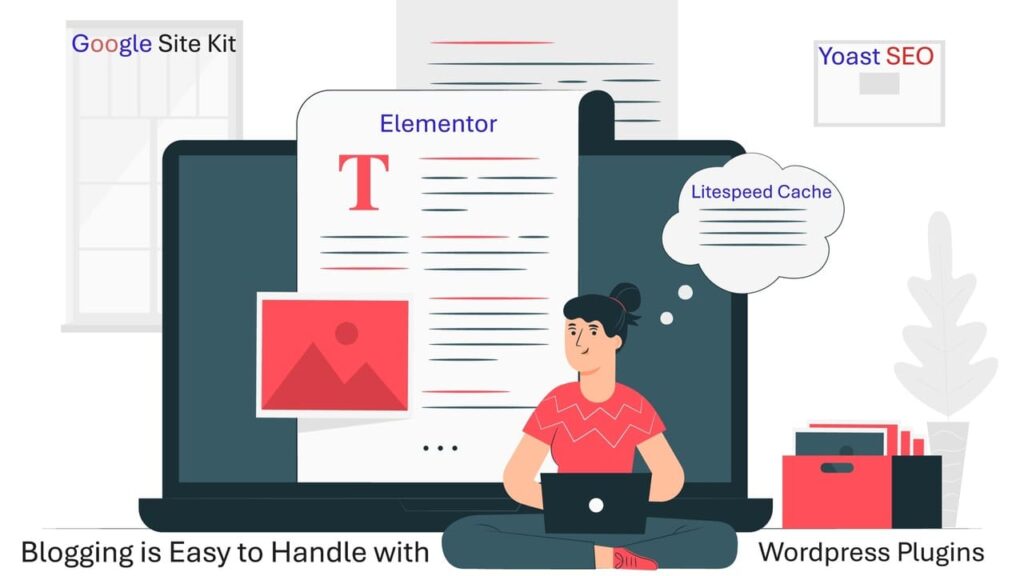 Introduction If you’re diving into the world of WordPress, you’ve likely heard of wordpress plugins. But what are they really? Think of plugins as the apps for your website. Whether you’re building a blog, eCommerce… Read more: Top 10 Important WordPress Plugins with Features and Usability
Introduction If you’re diving into the world of WordPress, you’ve likely heard of wordpress plugins. But what are they really? Think of plugins as the apps for your website. Whether you’re building a blog, eCommerce… Read more: Top 10 Important WordPress Plugins with Features and Usability - What is Technical SEO? Beginner’s Guide for 2025
 Introduction Learn what technical SEO means, why it matters, and how to start perfect for beginners stepping into the SEO world. You’re writing amazing content, and still, your blog isn’t showing up on Google like… Read more: What is Technical SEO? Beginner’s Guide for 2025
Introduction Learn what technical SEO means, why it matters, and how to start perfect for beginners stepping into the SEO world. You’re writing amazing content, and still, your blog isn’t showing up on Google like… Read more: What is Technical SEO? Beginner’s Guide for 2025 - What are the Core Concepts of Digital Marketing? A Complete Beginner’s Guide
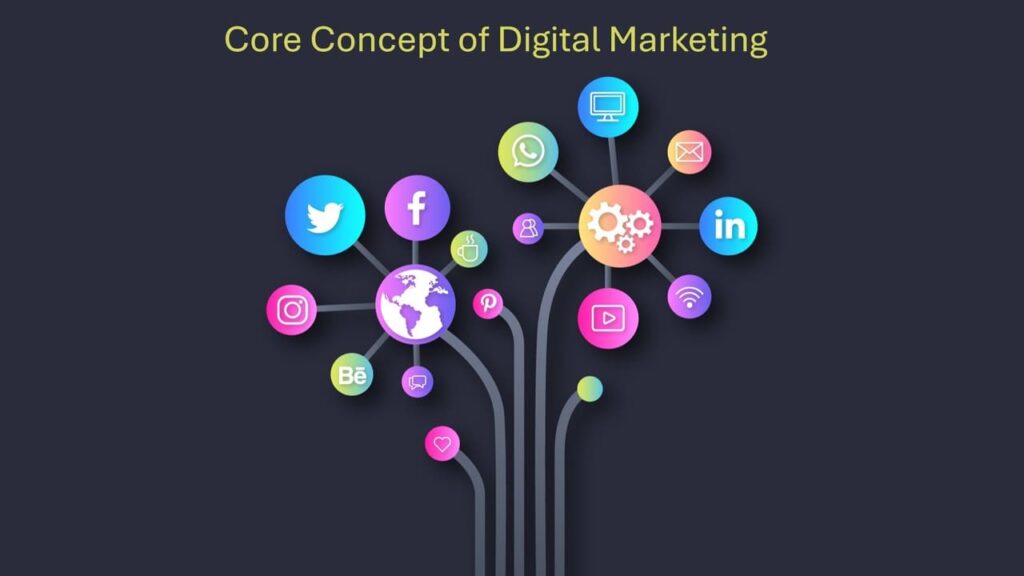 Introduction What Is Digital Marketing? Discover the core concepts of Digital Marketing including SEO, content marketing, social media, PPC, and more. Learn how these strategies work together to grow your online presence in 2025. Digital… Read more: What are the Core Concepts of Digital Marketing? A Complete Beginner’s Guide
Introduction What Is Digital Marketing? Discover the core concepts of Digital Marketing including SEO, content marketing, social media, PPC, and more. Learn how these strategies work together to grow your online presence in 2025. Digital… Read more: What are the Core Concepts of Digital Marketing? A Complete Beginner’s Guide



Pingback: Top 10 WordPress Plugins Key Features You Need in 2025
Pingback: How to Get Google Adsense Approval for New Blog in 2025 -